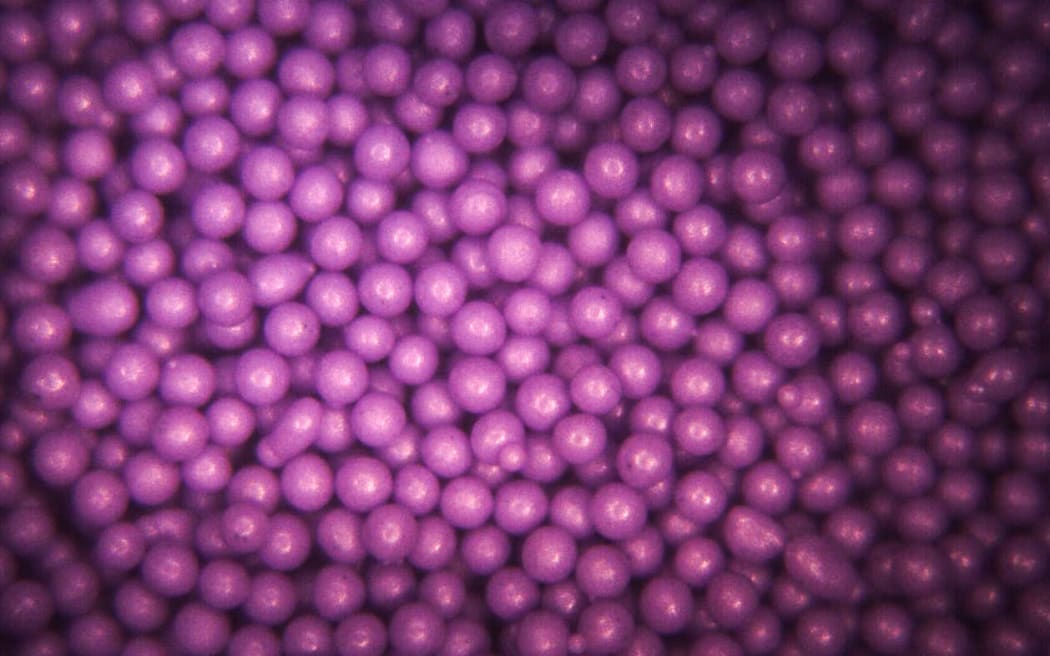This is a good move for our oceans.

An extreme close up of microbeads. Photo: MPCA Photos
The tiny plastic particles found in some cosmetics and personal care products are likely to be outlawed in New Zealand in July next year.
Environment Minister Nick Smith announced today that the manufacture and sale of products containing the beads would be banned in New Zealand “because of the long-term risk they pose to our aquatic and marine environments”.
The announcement comes two decades after scientists first sounded the alarm about them polluting waterways, and follows on from bans in the United States and Canada.
LISTEN> Sally Gaw, environmental chemist at the University of Canterbury, talks about how what we wash our faces with could end up on our dinner plate.
According to University of Canterbury researchers, one tube of microbead facewash can contain more than 300,000 beads. Most end up washed through water filtration systems and into the sea, where they are eaten by marine animals.
The plastic beads provide zero nutrition to the filter feeders which can consume them, causing them to die of starvation.
A study by the university, in collaboration with the University of Otago, found that concentrations of microplastics on Canterbury beaches were comparable to concentrations found in more heavily populated areas overseas.
There are about 100 different products in New Zealand that contain microbeads, including deodorants, shampoos and conditioners, shower gel, lipstick, hair colouring, shaving cream, sunscreen, insect repellent, anti-wrinkle cream, moisturisers, hair spray, facial masks, baby care products, eyeshadow and mascara.
Most are imported.
Natural alternatives to microbeads include products like apricot kernels and ground nuts.
A consultation document, Managing microbeads in personal care products, will be open for consultation until February 28. The proposed ban under the Waste Minimisation Act is to take effect on July 1, 2018.
WHAT ARE MICROBEADS?
*Microbeads are tiny plastic particles less than 5nm in diameter - some initially start off small and can be found in cosmetics, commonly used as exfoliants. Bigger pieces of plastic in the ocean can be degraded by wind, water and sun can also end up as a microplastics. Fibres from synthetic clothing is also included.
*They’re small and tend to float, so aren’t filtered by wastewater treatment plants - rather making their way into the water.
*They degrade very slowly, are widespread in oceans and have been found in an increasing number of marine animals.
*Aquatic animals including fish and shellfish can ingest microplastics. Animals may mistake them for food as they can look like prey items. Ingesting microplastics can trick animals into feeling full, causing starvation and microplastics can damage digestive tracts affecting the health of the animals.
*Microplastics can concentrate contaminants from the water which may be transferred to the animals when they ingest them.
*Microbeads are commonly used in personal care products, like body scrubs, as abrasives and are washed down the drain. Microbeads are not removed by wastewater treatment plants and will be discharged with the treated wastewater into the environment.


